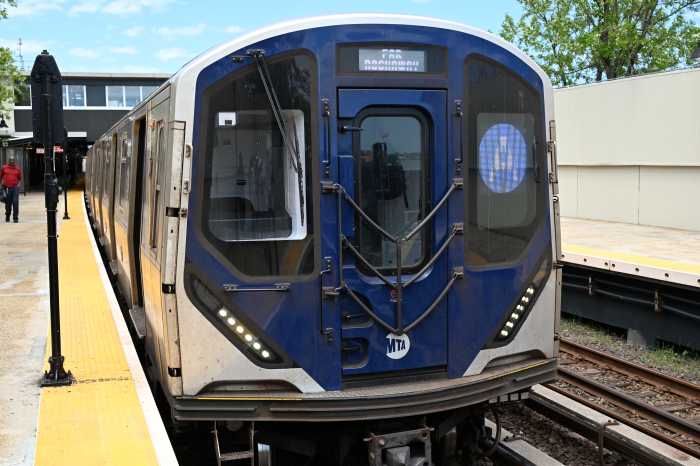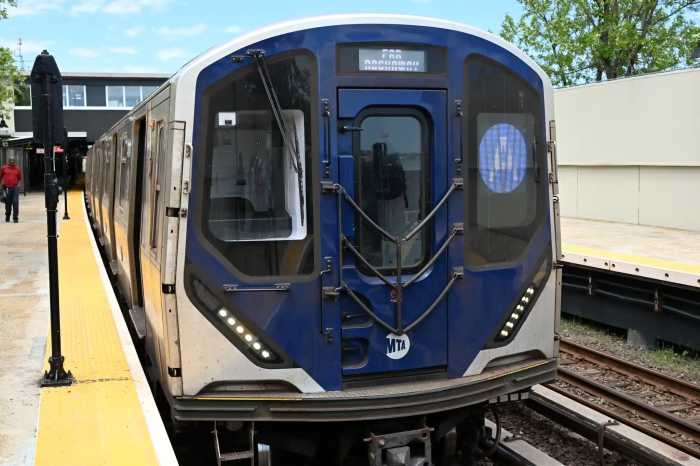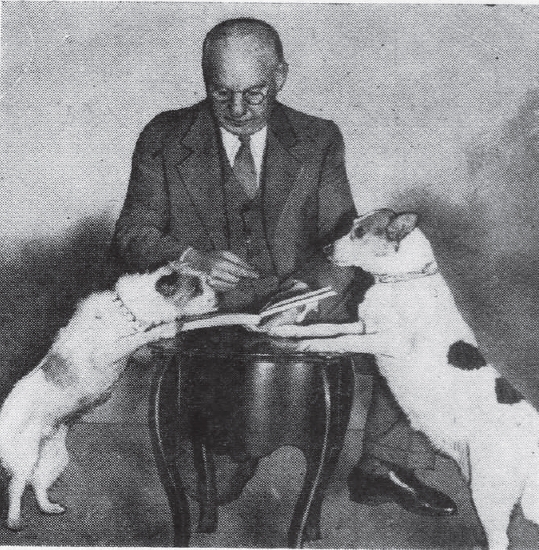The global engineering firm AECOM has pitched extending the 1 train into Red Hook, Brooklyn, as part of its new, expansive redevelopment proposal for the neighborhood.
Chris Ward, AECOM’s senior vice president, unveiled on Tuesday three different concepts varying in density and footprint—his firm refers to them as “frameworks for civil discussion,” rather than concrete plans—that would bring as many as 49,000 new housing units to areas of Red Hook and Sunset Park to help increase affordable housing, improve transit access and bolster the area’s storm resiliency.
“Red Hook is the New York City neighborhood that can accommodate the most new density without displacing the existing community,” AECOM said in its report on the concepts.
The two larger proposals would call for 35-million and 45-million square feet of added density, respectively, in the neighborhoods and would be anchored by the revival of the 9 train subway line.
Only this time the 9 would branch off the 1 train at Rector Street to serve three new stations in the Red Hook area — one at the Atlantic Basin and another on Lorraine Street near the Red Hook Houses — as well as a connection to the MTA’s F, G and R trains at a new Fourth Avenue and Tenth Street station.
Ward estimates that the new service would cost $3.5 billion and link Red Hook residents to one million job opportunities accessible within 45 minutes by the train. The stations
“The 1 train seems for us the most advantageous option,” Ward said after presenting the entire proposal at New York University’s Rudin Center Tuesday morning. “It’s probably the least expensive and probably gives you the maximum interconnections into job opportunities. It connects you up, interestingly, through lower Manhattan, but then NYU, Columbia University, and then up into upper Manhattan and the Bronx.
“I just think for the bang for its buck, all of those connections are of value,” he added.
MTA spokesman Kevin Ortiz, said in an email that “we look forward to hearing more about [the subway extension], especially details regarding funding.”
In each proposal, much of the new residential property would be built Port Authority-owned, or what the firm considers “vacant or underutilized.” A quarter of all new housing would be designated as affordable units, which could make way for at most about 14,300 affordable units in the area.
When asked about elements of AECOM’s concepts, Steve Coleman, a spokesman for the Port Authority, said the bi-state agency has “been briefed on the proposal and is currently reviewing it.”
Ward said AECOM’s proposals should be considered as very preliminary, or “the beginning of a discussion.”
“There’s a buy-in for deciding that something good has to happen in Red Hook,” Ward said, intending for his concepts to open the door for community input.
Alex Washburn, a Red Hook resident in attendance at the presentation and a professor of resiliency at the Stevens Institute of Technology, said he had wished residents were consulted for AECOM’s first draft.
“We’re not a community that takes orders from the outside,” Washburn said, addressing Ward and the panel. “We’re a community that has gone through a lot …We’re a community that understands that the future requires change. But it will be on our terms….”
City Councilman Carlos Menchaca echoed those sentiments and slammed what he described as a “slick, expensive proposal” that “pretends to foster dialogue.”
“AECOM’s proposal is a dead-end sales pitch,” Menchaca said in a statement. “Greenwashing a development fantasy with elaborate graphics and splashing words like ‘resilience’ and ‘equity’ isn’t good enough. The false premise here is that Williamsburg-style market rate condos on the waterfront are how to build sustainable communities in Red Hook and Sunset Park.
“I’m not surprised a giant global conglomerate would seek to co-opt and reframe Brooklyn neighborhood planning for their self-interest,” Menchaca continued. “What shocks me is the absence of anything new, innovative or useful in their proposal. AECOM hasn’t bothered to engage Brooklyn residents and local planning experts. Their slick, expensive proposal, pretending to foster dialogue asks, ‘What kind of city do you want to live in?’ Well AECOM, I choose to live in one where local communities determine their own future. Come visit sometime, we’ll show you around.”







































